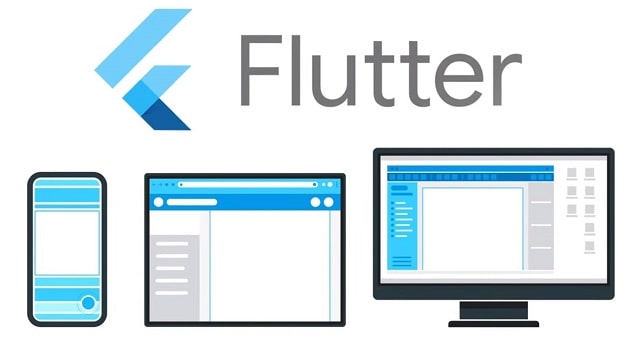
User interfaces are becoming more important in our daily lives, whether mobile applications, web pages, or even ATMs have a user interface. That is why they are a very important part of the development of an app and require special attention and care when designing them.
With new smartphones becoming larger and more difficult to use with one hand, the interface has been focused on making apps easy to use with one hand by holding the mobile device while also minimizing the touches required to scroll through the application. All this with the idea of optimizing the app and making the app as human and intuitive as possible.
By applying concepts such as minimalism in interfaces and intuitive design for the user, we ensure that any user can use the app and we promote it to reach more users, maximizing the use of our app and promoting its growth, remember that the best marketing for an app it is word of mouth.
In the Flutter front end, unlike most frameworks, Dart is the only programming language you use to code. This is an underrated benefit of Flutter. Especially for a tool that can create desktop, mobile, and web apps.
Most user interface platforms use more than one language. For example, in front- end web development, you need to write HTML, CSS, and JavaScript. For Android you have to write Kotlin (or Java) and XML. But in Flutter, it is just one language: Dart.
Along with the benefit of a single programming language, Flutter is simple because everything in Flutter is a widget.
Widgets In Flutter
A widget is a Dart class that extends StatefulWidget or StatelessWidget .
Your local Flutter installation comes with several widgets. To see the widgets available by default, open the packages folder of your Flutter installation in your preferred editor. Then search all the files for "extends StatefulWidget" and "extends StatelessWidget" and make a note of the number of results.
How To Implement Any UI In Flutter
1. Write Your Code Starting At The Top Left And Work Your Way Down To The Bottom Right
It will implement the UI widget after the widget according to the position of each element in the UI. So first you will write code for the things that appear at the top of the UI. Then keep writing code for the other elements moving down the page until you reach the end of that UI.
2. Choose A Widget
Next, you will need to logically determine which widget you want to use for a given UI element. At a minimum, for a given UI element, you will be using simple widgets that you are familiar with based on what their names say they do.
The name of the UI component will most likely be the name of the widget. If you are having a hard time making a choice, a quick search online will give you the answers. Flutter has a huge online community.
3. Use Widget Groups
If a group of UI elements are arranged vertically, one after the other, use a Column. If they are arranged horizontally, one after the other, use a Row
4. Add More Customization
It won't customize widgets just because of refactoring and iterations (DRY code). You will create custom widgets because of the UI you are implementing.
You will create custom widgets because the many widgets available don't always meet the exact needs of a given user interface. You will need to combine them in some special way to implement a particular user interface.
